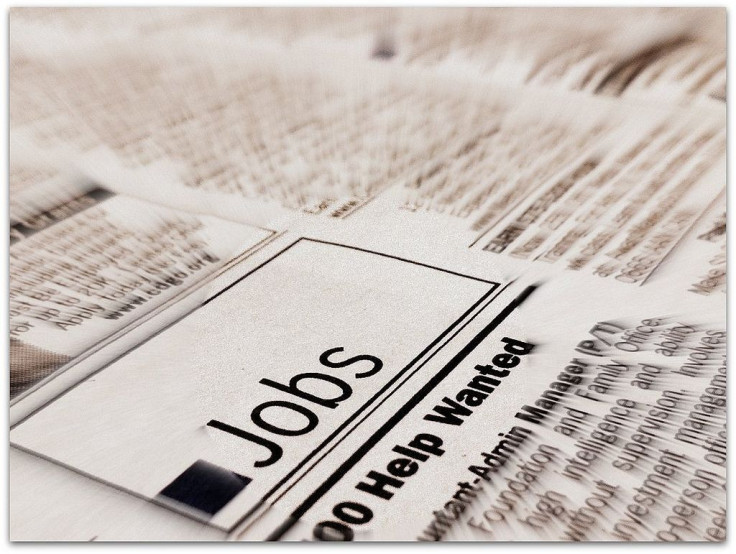Australian unemployment rate analysis: Why a drop in unemployment doesn't add up – literally

Unemployment has decreased, according to the latest figures. Here is a question: if the unemployment rate drops, is everyone happy?
Suppose that, in a very small country, 380 people are either working or would like to work (this group is the labour force), and suppose 38 of these are unemployed. The unemployment rate is 38 out of 380, or 10%: that is the ratio of the unemployed to the labour force. Here are two scenarios.
Scenario 1: suppose that 19 of the unemployed instantly obtain jobs. Now the unemployment rate drops to 19 out of 380 or 5%.
Scenario 2: suppose that 20 of the unemployed stop seeking work. This removes them from the labour force. The unemployment rate is now 18 out of 360, or 5%.
In each of these scenarios the unemployment rate drops to exactly the same figure but for opposite reasons. A government spruiking its economic credentials would welcome Scenario 1 but hide from Scenario 2. The above scenarios, along with many economic arguments, make a good case to treat the unemployment rate with caution.
Whereas one can use economics to ask “has the unemployment rate fallen for the right reasons?”, it’s possible to use mathematics to ask “has the unemployment rate fallen at all?”
The Australian Bureau of Statistics (ABS) considers several versions of the unemployment rate. Let’s focus on the one being reported the most: the seasonally adjusted figures.
In January 2016 the unemployment rate was 6.0%; in February it was 5.8%. Surely even blind Freddie could see this is a drop in the unemployment rate! If we knew exactly how many people were unemployed, and exactly how many were in the labour force, then we would have an exact unemployment rate, and, sure enough, it would have dropped.
However, the ABS' Labour Force Survey, a very robust gathering of statistical information, covers about 0.32% of Australian workers. Since there is a chance that the survey may have covered particularly high or low areas of unemployment, the ABS issues a “margin of error” with its unemployment figures. That is, the quoted unemployment figures could be slightly too high or slightly too small.
Suppose we knew the January figure to be between 5.98% and 6.02%, and the February figure to be between 5.78% and 5.82%. We could certainly conclude that the rate dropped: even in a “worst case scenario” where we underestimated January and overestimated February, we are still certain of a drop.
If, on the other hand, the errors were larger, and the January figure lay between 5.8% and 6.2%, and the February figure lay between 5.6% and 6.0%, we couldn’t deduce anything. Since January could have been as low as 5.8%, and February could have been as high as 6.0%, the rate could have actually gone up!
There is therefore a murky middle ground when the margins of error are comparable to the “drop” in the rate. It is lazy to say “the drop falls within the margin of error, hence we can’t say anything”. What I propose below is a way of measuring the chance that the unemployment rate has actually fallen.
The ABS issues unemployment figures as, say, “6% with a standard error of 0.1%”. This does not mean that the unemployment rate certainly lies within 5.9% and 6.1%, but rather that the unemployment rate is “likely to be close to 6%”, and “very likely to be fairly close to 6%”, and “almost certainly within coo-ee of 6%”.
Numerically, it means that there is a 68% chance of the rate falling between 5.9% and 6.1% (that is, one lot of 0.1% either side of 6%). Moreover, there is a 95% chance of the rate falling between 5.8% and 6.2% (two lots of 0.1% either side). These chances ramp up dramatically the further one moves from 6%: the chances of the rate being either less than 5.4% or more than 6.6% are around one in a billion.
Consider now the January and February figures: everything that follows has been rounded to two decimal places. In January the unemployment rate was 6.01% with a standard error of 0.15%; in September it was 5.81% with a standard error of 0.12%.
Using some probability theory, and the help of a computer, one can show that there is a 85% chance that the rate has actually fallen. Put another way, there is a one-in-seven chance that the unemployment rate has risen!
The example of the January/February figures should serve as an extra bulwark against rapidly embracing changes in the unemployment rate. Not only could the rate have gone down for the wrong reasons, but there is a good chance (one-in-seven) that the rate went up.
Tim Trudgian, Research Fellow in Mathematics, Australian National University
This article was originally published on The Conversation. Read the original article.





















